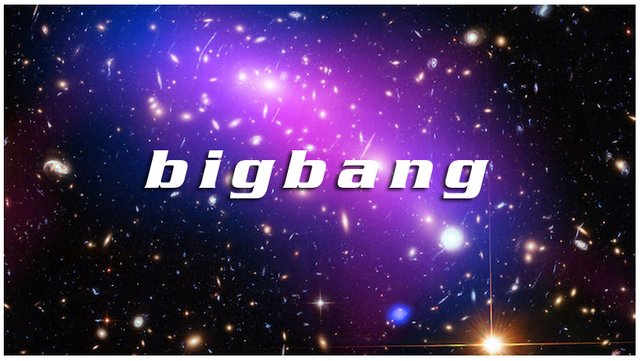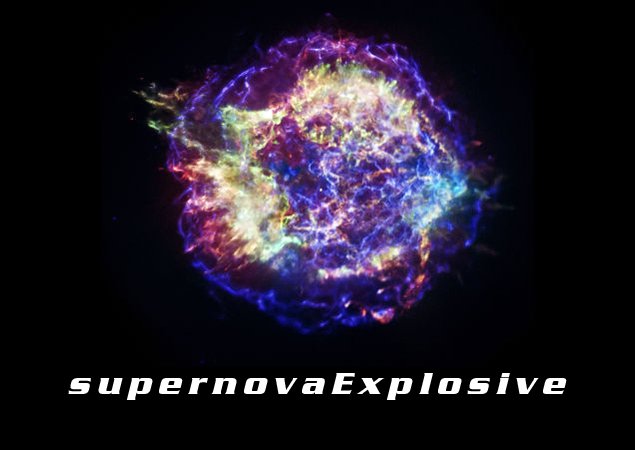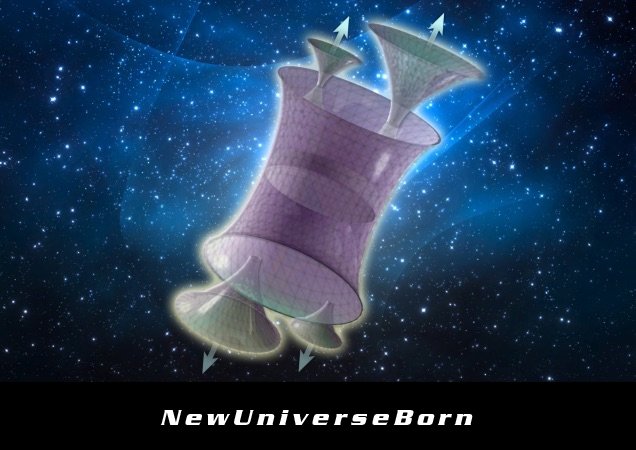
It is told that the universe began with the big bang. Naturally, however, someone watching the Big Bang did not take that scene from a movie. So suddenly, the question is there really something before the first Big Bang ?
Indeed, theoretical physicists and cosmologists are chasing the question like spouse pursuing cheating, "Is there something before the Big Bang?" There is no answer to that question yet. However, it can be inferred based on various data and theory .
Summarize what kind of thinking is coming out now by Professor of California Institute of Technology and guide of Sean Carroll talking about "possibility before Big Bang" at the American Astronomical Society on January 2017 .
However, these are still speculative, not established theory. "Present idea is not established as a physical law that we understand, nor is it verified in any way, " Carroll himself says. Previously, Peter Woit, a theoretical physicist at Columbia University, said, "General advice on physicists is that they really do not really know when they say" I do not know what is going on. " They are really in the dark."
Before: The Mystery
First of all, one of the most strange qualities of the universe is that its entropy is very low. Entropy is super-roughly like "its messy," and that is low, it is clearly compacted .
Ph.D. student at Columbia University Stefan Countryman explains as follows. Suppose the Big Bang is a phenomenon like a bomb exploding in a sand filled with nothing. If so, after the explosion, it seems that sand is scattered all the way in all directions, but soon a lot of chunks called sand castle could be made in space. I do not know how this happened. After the Big Bang, there may be a more entropy, cluttered state (or perhaps it was likely). But actually in the now of the universe celestial objects such as star systems and galaxies and galaxy clusters, and that the space between them, there is a beautiful pattern.
Entropy, or disordered state, increases with time. Even without external forces, the castle of sand collapses without permission. Nevertheless, the entropy of the present universe is still very low. In other words, Carroll says that the entropy of the early universe is even lower and can be considered more orderly than it is now.
From that we can see how the universe is before the big bang. "Many people thought that the early universe was simple, smooth, nothing, with only small waves, it was considered natural as the beginning of the universe," Carroll said. "But when I think of entropy, I realize I need to change my perspective and add another explanation ."
In addition to entropy, when thinking about the Big Bang before, there are many things to consider the consistency with the current universe. Let's take a look at each idea and idea to explain the universe before such a big bang.
1. Hailing Universe
One way of thinking is that the universe with a low entropy now starts from where the universe before it broke. This idea is also called " big bounce ." In this way of thinking, we assume that the universe that originally existed collapsed inward until it reached a singular point where gravity became infinite. This idea already existed in the 1960s, but it began to be examined more seriously from the 1980s to the early 1990s.
Furthermore, this phenomenon may not have been done once but may have been done more than once. This means that the universe is like an accordion, might have countless repeated expansion and contraction I do.

However, the big bounce theory has a problem. The idea of detonating at a singular point contradicts Einstein's general relativity theory which is the law of the work of gravity. Even in this universe, it is thought that a singular point exists in the black hole, but according to the law of physics, it can not explain the mechanism of exploding if another universe collapses and reaches a singular point. To explain the big bounce, new particles and places are needed along with a new theory to replace the theory of relativity. "There is nothing in general relativity that says" the universe bounces once it reaches a singular point ", Carroll says.
A further big problem is that if the universe bounces, there is a need for entropy to decline over time. But entropy always grows with time in the established physical laws .
That does not mean that the universe has never bounced so far, it may just be incomplete for the current theory. The theory so far covers only the universe that can be observed by humans .
2. Hibernation of Universe
On the other hand, there is the idea that the universe may have been a fixed space evolving slowly, as advocated by physicist Kurt Hinterbichler et al. In this idea, it may be that the universe before the big bang was metastable, that is, the provisional state until it noticed "there is a more stable state".
For example, it is like the ball is moving in a dip in the side of the mountain. In other words, the ball begins rolling towards the valley with a slight impact. Speaking of the universe, I was hibernating at ease, that means that I went to the big bang with a small stimulus .
However, Carroll says that there is also a problem with this theory of 'hibernating universe'. Because in this theory, the beginning of our universe is supposed to have low entropy, there is no explanation for the reason .
But Hinterbichler mentioned above does not seem to have a problem with it. "We are just seeking an explanation before the Big Bang, so that we can see why the situation we are seeing is this, that is what we can maximally hope for."
But Carroll thinks there is another theory that can explain the universe with low entropy. That is the following multi-dimensional cosmology.
3. Multi-Cosmology
According to Carroll, the idea of explaining the low entropy we are now looking at is the multi-dimensional cosmology, while avoiding the big bounce theory "entropy decreases over time" problem. This idea is derived from unfinished inflation theory although it is widely accepted .
The inflation theory, Alan Guth's the Massachusetts Institute of Technology (MIT) is in 1980 announced ones, space in which immediately after the Big Bang, has been that it has expanded in the superluminal. In quantum mechanics, there is always random and small fluctuation in the energy of the space, but during the inflation, these energy's top and bottom have become very large. And by doing so, it is said that a structure such as a large and low entropy galaxy and outer space in the universe has been made.
Inflation theory has evolved through the observation of the cosmic microwave background radiation (CMB). CMB is the oldest and most distant light that we can observe hundreds of thousands of years after the beginning of the Big Bang. And the inflation theory closely matches the observation result of CMB .

Some people think the multi-dimensional universe is the result of inflation. It is a huge expanding soup from which small, low entropy universe jumps like a bubble. These universes can not communicate with each other. Marcus Woo of PBS Nova explains as follows.
In the early 1980s, physicists discovered that inflation would last forever, only in part of the universe. However, even in these gaps, inflation continued, expanding faster than light. As a result, these bubbles were separated from each other, becoming a virtually isolated universe with its own physical laws.
Carroll thinks that this multi-dimensional space model is the most appropriate among the ideas introduced in this article. But the multi-dimensional space he thinks is a little different from the above, "(my idea is) one version of multi-theory of cosmology, but what is different is that when the universe with low entropy is born, the entropy of the parent universe is large also I have to say that is that. " This model suggests that there is a huge expanding space in front of the Big Bang, from which our universe and other universe have been born. Other universes can not be detected from our side and its beginning may be before our universe and after.
However, Mr. Woit mentioned above is concerned that physicists will stop the fundamental question, though, although multi-element cosmology is catchy as popular science .
"The theorists had the idea that the universe is innumerable, and it is possible to think of a model in which the numbers (representing the nature of the particles etc.) are different for each universe "Wait says. However, he believes that "whatever is there" should not give up the explanation that the universe that we are now "happened to be so" happened .
But Carroll is optimistic about research before the Big Bang. While stabbing the nail, "We do not even know," he says, "These are speculative ideas that are finally being taken seriously now, but there is hope, I believe it will definitely make sense for us to continue."
Source : Supernova Explosive : NASA / CXC / SAO --- New Universe Born : Jason Torchinsky
